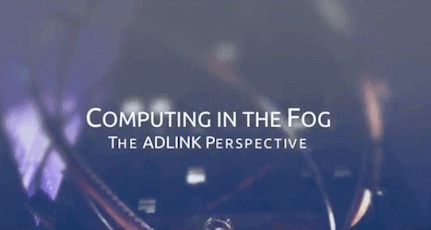Computing in the Fog: Ingredients for Success
In this video, ADLINK Executive Vice President Rob Risany and General Manager Elizabeth Campbell describe the skills and processes required to build successful IoT applications. Hear how leading enterprises are leveraging sensors and data in innovative ways to create new business opportunities.
Watch this series, Fog and Edge Computing, from the beginning here.
Transcript
RR: So, really, it’s really about where you start. So of course what we first can do is the classic “what’s your pain” kind of problem, okay? Which our, our field organization is, are experts at. But then when we bring them back to, say, our San Jose lab, or we start up a pilot program or a digital experiment with a client, we want to start with the outcome first. And so the methodology, humorously, this was something that, that we’ve developed over, over a couple years working together. It, it really does look a lot like the old game of Mad Libs.
AB: Okay.
RR: Where, where effectively, if I can’t define a mission for what my IoT solution is going to look like, if I can’t presume technical success, and envision how it’s going to impact the people, assets, or places, specifically, in disrupting the way that that interaction works today, I don’t get to move to the next step. We start with the outcome, and we don’t move past to the next phase until we have a clear definition, because here’s the reality. The technology is out there. There is no missing pieces at this stage. It’s in the ecosystem. So what we’ve done is we’ve leveraged and created a super-set methodology that allows us to identify which underlying methodologies from those different sectors will be incorporated at different phases. What are the kinds of well-defined features that your technical, that our engineering teams would be looking at every day?
Elizabeth Campbell: Well, it’s interesting. There are, there are the typical questions that you go through. What kind of CPU speed are you looking for? How much memory do you need? What’s your communication methodology? Et cetera. And what’s funny is, in my years even prior to joining ADLINK, when I was in management consulting and systems integration, et cetera, there was never one project that was same as the next.
RR: Right.
EC: Everybody wants something just a little bit different.
AB: Sure.
EC: And so when we’re in front of a customer and we’re talking about a solution or a piece of hardware it’s like, “Well, I like that. That’s a little vanilla. Can you put chocolate sprinkles on it?” And 70% of our business has chocolate sprinkles on it, frankly. So there’s that general recipe, that when you sit down the first time with a customer, that they’ll have. And it’s going to be price, and it’s going to be availability, and oh by the way, it’s going to be size and compute. I mean, there’s that recipe but then we build out on the recipe to actually get to the final thing.
RR: What’s now changed in the conversations that we start to have around IoT is, okay, we’ve been doing this for a long time, but can we do anything else? Okay, we are controlling a device. We are issuing instructions or enabling something, but we’re generating data. Is there something we can do with it? Are there new business models that can evolve?
AB: Okay.
RR: Can I leverage the compute power that I have on this device to deliver a new value-added service? Especially with the downward pressure on a lot of equipment providers. So now it becomes really critical for us to be able to capture data from these complex systems, and do new things with it. And that’s what people are coming to us for because we’ve been the trusted hardware provider, and help them build the systems-
EC: Yes.
RR: … at the beginning that actually made it work.
EC: If you look at us historically, we talked about providing building blocks. And so we provided hardware building blocks, but the vision that we’ve had as an organization, moving forward, it should really solve the entire solution. So when Rob and I met two years ago and started talking about what IBM, along with Intel, could bring to the table, that was perfectly in line with our value proposition.
AB: Thanks for joining us. For more information, please use the link below. [http://adlinktech.com].
Fog & Edge Computing video series
-
Vignette #1:
-
Vignette #2:
-
Vignette #3:
-
Vignette #4:
-
Vignette #5:Computing in the Fog
Connect with ADLINK
About ADLINK
ADLINK Technology is leading edge computing with solutions that drive data-to-decision applications across industries. ADLINK provides robust and reliable hardware platforms, data connectivity, and complete Industrial Internet of Things (IIoT) solutions to serve a wide variety of industries including networking, industrial automation, healthcare and defense.
Learn more at adlinktech.com.









